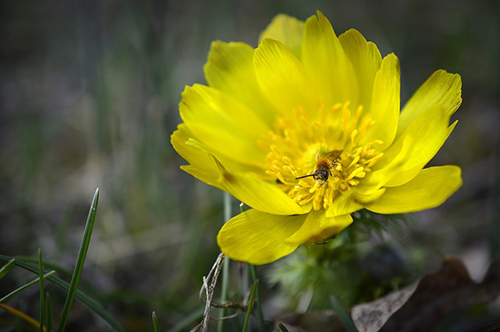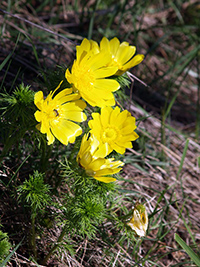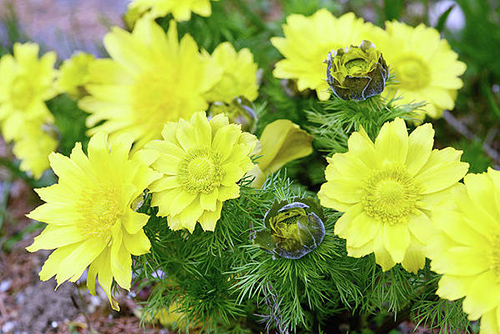Contents
The yellow adonis plant is a prototype of those medicinal herbs whose toxic dose is quite close to the therapeutic one. This means that the plant must be cautiously administered.

Healing Properties and Warning
All parts of the plant contain two types of cardiotonic glycosides, similar to those of the foxglove plant: adonidosis and adonivernosid. The plant has cardiotonic (increases the strength of heart contractions), coronary artery dilating (fights against angina pectoris), diuretic, and mildly sedative properties. Thus, under medical supervision, it is a highly valued remedy for diverse heart afflictions.
Unlike foxglove glycosides, which are widely used as cardiotonic, those of the yellow adonis do not accumulate in the body (they are quickly eliminated via urine). Therefore, it is helpful to temporarily substitute foxglove, especially in long-term treatment.
WARNING! In high doses, it provokes nausea, vomiting, and diarrhea. Because of its toxicity and difficulty of dosage, only physicians can prescribe it and control its effects.

Yellow Adonis Scientific Facts
- French: Adonis du Printemps.
- Spanish: Adonis vernal.
- Environment: Central and Southern Europe. It is a rare plant that prefers south-facing rocky and calcareous soils.
- Description: A plant of the Ranunculaceae family, it grows from 10 to 40 cm high. It has finely divided leaves and big, yellow flowers that open with sunlight.
- Parts of the plant used medicinally: The flower clusters.

How to use Yellow Adonis
- Infusion with eight grams of flower clusters per 200 ml of water at 60 degrees Celsius, steeping until cold. That usual dose is from four to six tablespoonfuls daily.
DISCLAIMER: All content on this website is presented solely for educational and informational objectives. Do not rely on the information provided as a replacement for advice, diagnosis, or treatment from a qualified medical expert. If you are pregnant, nursing, or have any preexisting medical concerns, talk to your doctor before using any herbal or natural medicines.
REFERENCES
- George D. Pamplona-Roger, M.D. “Encyclopedia of Medicinal Plants.” George D. Pamplona-Roger, M.D. Encyclopedia of Medicinal Plants. Ed. Francesc X. Gelabert. Vols. 1 San Fernando de Henares: Editorial Safeliz, 2000. 215. Print.
- National Institutes of Health. (2020, December). Adonis vernalis. https://pubmed.ncbi.nlm.nih.gov/21447342/
- Examine.com. (2022). Adonis vernalis. https://examine.com/research-feed/study/w9kjz0
- National Center for Complementary and Integrative Health. (2020). Herbs for heart health. https://www.nccih.nih.gov/health
